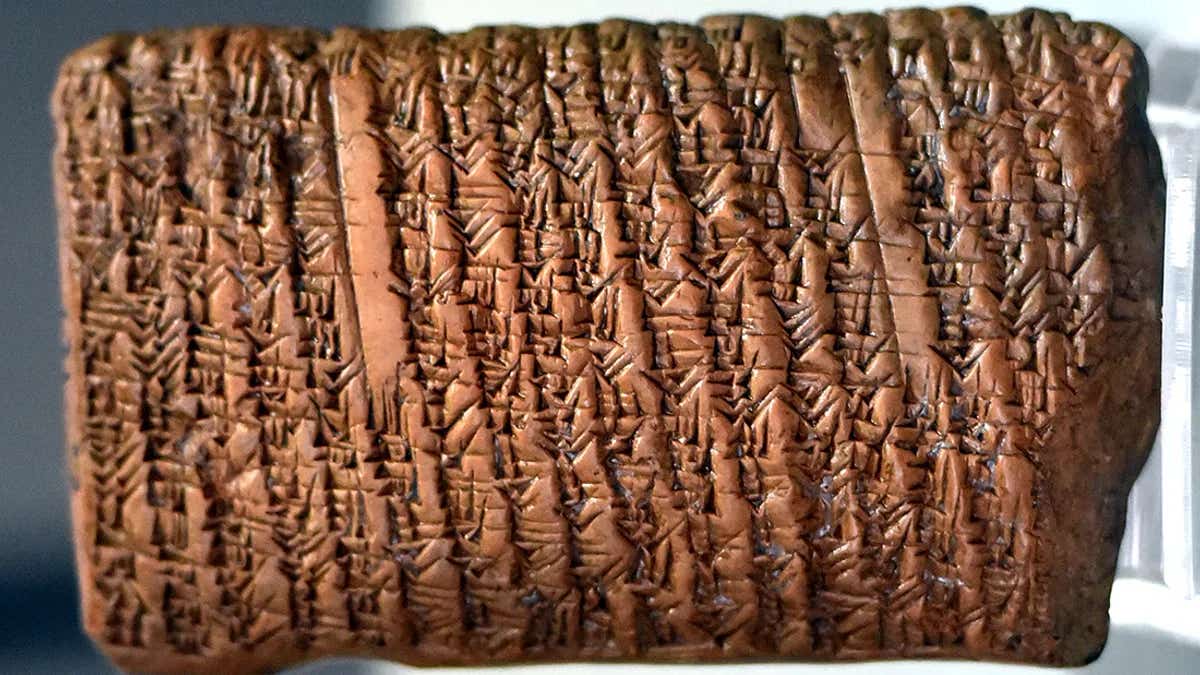Greek mathematician Pythagoras may not have discovered the Pythagorean theorem
Study highlights a Babylonian tablet known as IM 67118, dating back to around 1770 BC, which demonstrates the use of Pythagorean principles

The study highlights a Babylonian tablet known as IM 67118, dating back to around 1770 BC, which demonstrates the use of Pythagorean principles. (CREDIT: Osama Shukir Muhammed Amin FRCP (Glasg) via Wikimedia Commons)
The Pythagorean theorem, a cornerstone of high school mathematics education, has long been attributed to the ancient Greek mathematician Pythagoras, who lived around 2,500 years ago. However, a study from 2009 revealed that the concept was known to the ancient Babylonians even before Pythagoras' time.
The theorem, expressed as a^2+b^2=c^2, asserts that in a right-angled triangle, the square of the length of the hypotenuse (c) equals the sum of the squares of the other two sides (a and b).
Despite its association with Pythagoras, it was recently unearthed that Babylonian mathematicians might have been the first to grasp this mathematical relationship.
Ancient Near East Empires around 1350 BC(Egypt, Babylon, Mitanni, Hittite, Assyria, plus Route of Abraham). (CREDIT: Journal of Targeting, Measurement and Analysis for Marketing)
The study highlights a Babylonian tablet known as IM 67118, dating back to around 1770 BC, which demonstrates the use of Pythagorean principles to calculate the length of a diagonal within a rectangle. This finding predates Pythagoras' birth by several centuries, challenging the conventional attribution of the theorem's discovery.
Another tablet, tracing back to approximately 1800-1600 BC, features labeled triangles within a square, further indicating Babylonian awareness of geometric principles akin to the Pythagorean theorem.
These discoveries suggest that the roots of this fundamental mathematical concept extend further back in history than previously believed.
Related Stories:
Upon closer examination of the Babylonian numerical system, which operated on a base 60 counting system, mathematicians decoded markings on these tablets, revealing an understanding of advanced mathematical concepts.
Bruce Ratner, a mathematician, emphasized that Babylonian mathematicians were likely acquainted with the Pythagorean theorem, or at least its special case for the diagonal of a square, long before Pythagoras' era.
"The conclusion is inescapable," Ratner wrote. "The Babylonians knew the relation between the length of the diagonal of a square and its side: d=sqrt(2). This was probably the first number known to be irrational.
The marks are in wedge-shaped characters, carved with a stylus into a piece of soft clay that was then dried in the sun or baked in an oven. They turn out to be numbers, written in the Babylonian numeration system that used the base 60. (CREDIT: Journal of Targeting, Measurement and Analysis for Marketing)
However, this in turn means that they were familiar with the Pythagorean Theorem – or, at the very least, with its special case for the diagonal of a square (d2=a^2+a^2=2a^2) – more than a thousand years before the great sage for whom it was named."
Ratner also shed light on the scarcity of original sources documenting Pythagoras' work, suggesting that Pythagorean knowledge was transmitted orally across generations due to limited writing materials. This oral tradition might have contributed to the association of the theorem with Pythagoras himself, as subsequent discoveries by his followers were often attributed to him.
Graphical representation of the Pythagorean Theorem and variations. (CREDIT: Chilimath)
"Moreover, out of respect for their leader, many of the discoveries made by the Pythagoreans were attributed to Pythagoras himself; this would account for the term ‘Pythagoras’ Theorem,'" Ratner explained.
These revelations challenge traditional narratives surrounding the origins of mathematical knowledge, underscoring the importance of archaeological and historical research in uncovering the true lineage of mathematical concepts.
Area version of the Pythagorean Theorem. (CREDIT: Creative Commons)
The recognition of Babylonian contributions to mathematical understanding serves as a testament to the richness and complexity of ancient mathematical traditions, expanding our appreciation for the diverse origins of mathematical thought.
The study was published in the Journal of Targeting, Measurement and Analysis for Marketing.
For more science and technology stories check out our New Discoveries section at The Brighter Side of News.
Note: Materials provided above by The Brighter Side of News. Content may be edited for style and length.
Like these kind of feel good stories? Get the Brighter Side of News' newsletter.



